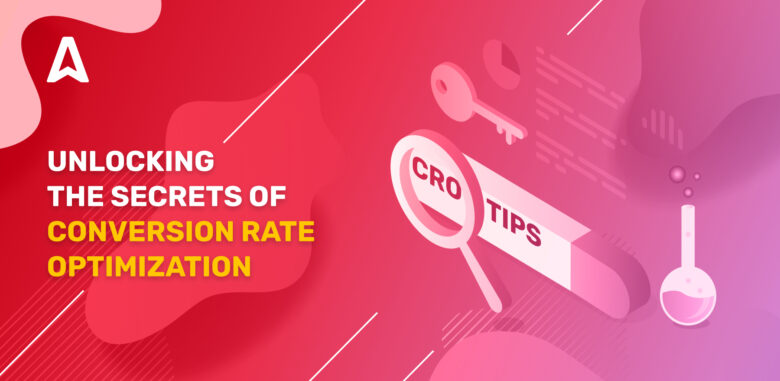Marketers and media buyers always chase traffic for their websites and landing pages, which is good. But the work doesn’t end there. More important than chasing traffic is ensuring the traffic generates a healthy number of conversions. There’s no use getting all the traffic and little to no conversions.
The conversion rate optimization process deals with customizing your site and landing page to encourage users to follow your suggested actions. This article will explain everything you need to know about it.
Understanding conversion rate optimization for advertisers
CRO optimization is an extensive process with many segments. It starts with designing a visually appealing, easy-to-understand website or landing page for the product you’re advertising. Then, you must target the right audience for your ads to boost your chances of getting conversions from your website. Next, you need to lead relevant users calling them out with a super-engaging ad message. The final stage involves continuous testing and refinement of your strategies. This includes analyzing user behavior, A/B testing different elements of your website and ads, and making iterative improvements to enhance the user experience and maximize conversion rates. CRO in marketing processes heavily relies on analytics.
CRO in marketing is essential for advertisers and affiliate marketers that want to generate the best results. Without it, your campaigns will likely not be as successful as you want.
Harnessing a new traffic source, the least you need is a wasted budget. With Adsterra, you have a smart tool to optimize CPM and CPC traffic for conversions. Sign up and test CPA Goal!
What is conversion rate optimization?
Let’s start by defining a conversion. It’s an action someone takes after interacting with your ad, e.g., a purchase, newsletter subscription, signup, download, form fill, etc.
Your conversion rate is the percentage of users that follow the suggested action after viewing your ad. For instance, if 2000 people viewed the landing page or website advertising your new app, and 60 clicked on the download button, the conversion rate is (60/2000 X 100)%, giving 3%.
Conversion rate optimization strategy (CRO) deals with increasing your conversion rate as much as possible. In the above example, 3% is a low conversion rate that you’d want to increase to 10% or higher. CRO is the process you follow to make your conversion rate as high as possible.
Why conversion rate optimization is important
The conversion rate optimization process is important because it offers many benefits, including
- Higher return on investment (ROI): You’ll get better results for your advertising budget when you optimize your landing page and website.
- Better leads: If you tailor your landing page for the right audience, you’ll get customers likely to enjoy your product and spread the word about your business.
- Higher sales: More people will patronize your product or service, which is the goal of every business.
- Brand recognition: CRO smoothens your customers’ journey and makes them more friendly towards your business.
How to calculate conversion rate
As we illustrated earlier, you calculate the conversion rate by dividing the total number of conversions by the number of ad views for a specific period. In other words, you divide the number of people who took your suggested action by the total number of viewers and express it as a percentage. The CRO formula is simple, making it seamless to know how to measure conversion rate optimization.

The distinctive goals of advertisers in CRO
The primary aim of CRO is to boost ad conversions and get higher sales. There’s nothing more and nothing less. It applies to all types of ads, including Popunders, Push Ads, Banners, Video Ads, landing pages, etc.
Every advertiser’s goal is to get as much money from their campaign as possible. CRO strategies help you do this, whether you’re advertising for your business or running affiliate campaigns for external brands.
Traditional CRO vs. advertiser-centric CRO
Traditional CRO deals with the general tactics and strategies to increase conversions. However, CRO is better when tailored individually for every advertiser. For instance, an online bookstore won’t follow the same strategy as a gaming app. These two advertisers target different visitor profiles, meaning their campaigns require different approaches to get the best conversions possible.
Tailoring CROs to suit advertiser needs
Conversion rate optimization should be customized for different types of customers. Let’s say you’re an affiliate marketer who strikes a deal to promote a new mobile action game. You need to design an appealing landing page that incorporates content associated with games. For instance, you can place screenshots or gameplay recordings to demonstrate how the game works and entice visitors to download it.
If you get approached by another business to advertise their cookware, you won’t follow the same approach. Instead, your landing page will use different colors people associate with cookware. Instead of screenshots, you’ll place professional, high-quality images of the cookware set you’re advertising. You’ll also use different wordings to lure customers, and your desired conversion becomes a purchase instead of an app download.
Balancing user experience with conversion goals
Advertiser-focused Conversion Rate Optimization (CRO) strikes a balance between engaging users and achieving your primary marketing objectives. Your key responsibility is to maintain the coherence of your campaign.
- The primary offer on the landing page should align with that in the paid advertisements.
- The messaging and values conveyed in ad creatives should be consistent with those on the landing page.
- There should be a match in brand colors and style.
- If a discount or bonus is promoted in a banner, it should also be available on the landing page.
Discover the most common pitfalls affiliates encounter in ad creative design in this guide.
What are the benefits of conversion rate optimization for affiliate marketers?
- Drives more sales: Conversion rate optimization increases the chances of getting more sales from your affiliate marketing campaigns, translating into more commissions. CRO can increase your revenue by significant margins.
- Better customer understanding: CRO involves a lot of analytics and metric monitoring, which helps you understand the target audience better in case of future campaigns.
- Lower costs: You can lower customer acquisition costs and get more profit.
- Greater visibility: CRO improves brand visibility and recognition for the businesses you work with, and they’ll be more willing to partner with you for future campaigns.
Niche targeting and audience segmentation
Targeting is a non-negotiable aspect of conversion rate optimization.
You can target your ads according to many factors, such as country, city, device type, browser version, and many others. Targeting smaller, niche audiences might seem a good idea, but only if you know there’s enough customers in your segment and you can easily convert them. When starting out, it’s better to choose wider targets, so as to embrace all potential users. In other words, there’s no one-size-fits-all solution.
Below is a fitting case study of an advertiser who got a big return on investment by targeting a small niche market. They promoted dating offers to only Facebook Browser users, earning $247 from just $43 in ad spending.
You must not show the same advertisement to all your audience. Instead, you can separate your audience into different groups and display different ads to each group to generate the best results.
Adsterra lets you target ads according to many factors, including operating system (OS), geographic location, web browser, language, etc. Our platform helps you create perfectly-targeted ads to get the best conversions.
Leveraging ad creatives for higher conversions
You must optimize your advertising creatives to get high conversion rates. The creatives are the first thing anyone sees when they look at your landing page or website, so they should be appealing enough to capture the viewer’s attention as quickly as possible.
Your ad creatives should have these characteristics:
- Be clear and concise. The wording should communicate clearly about what you’re promoting. Any viewer should be able to understand what you’re advertising after a quick glance.
- Catchy headlines. Use headlines that grab the viewer’s attention as quickly as possible. You can use words that demonstrate a sense of urgency.
- Call-to-action. The ad should suggest an action that you want the viewer to take, e.g., “buy now,” “download,” “subscribe,” etc.
- Matching colors. The colors of the ad copy should match the landing page or website you place it on. This creates a smooth user flow and boosts your chances of getting conversions.
- High-quality media. Use high-quality photos or videos that are appealing to look at. The better the product looks on an ad, the higher the conversion rate for the business.
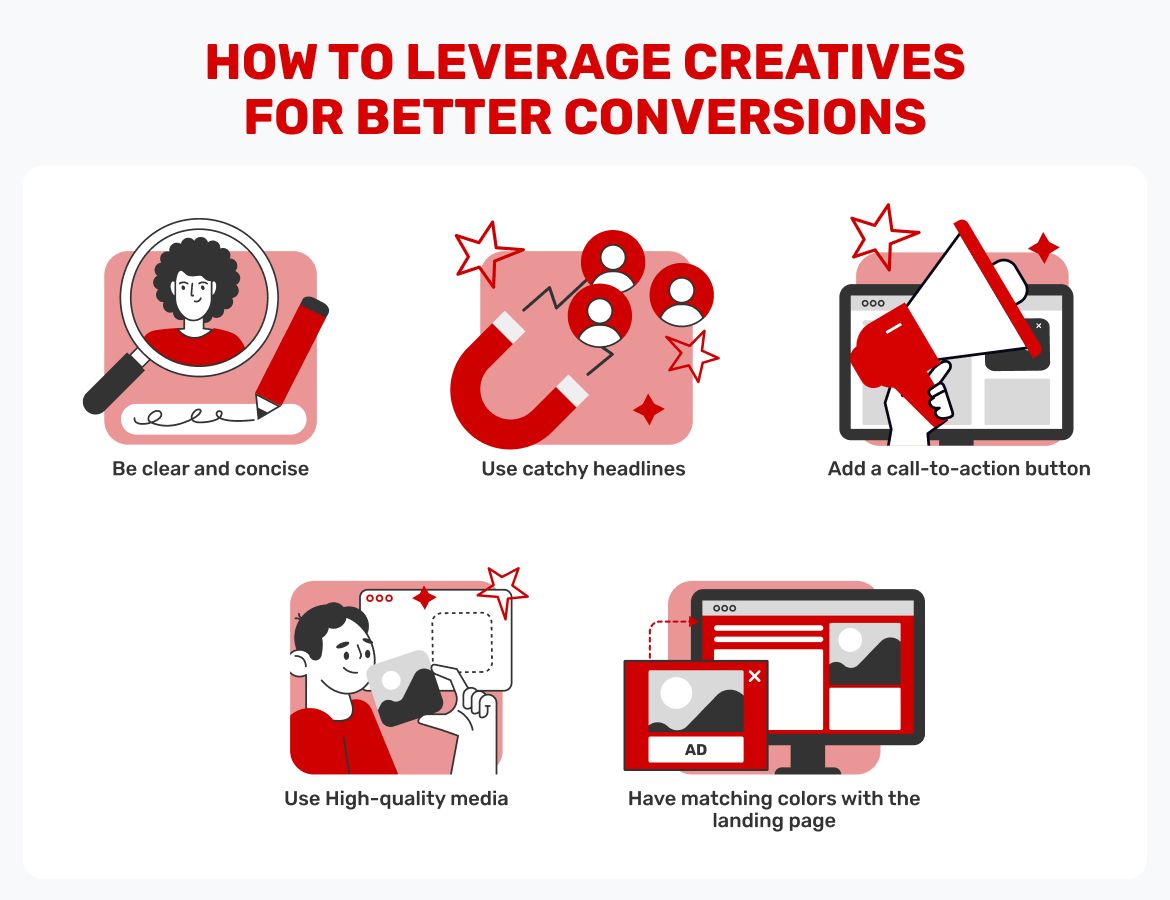
Here’s an example of a marketer who got a 326% return on investment by using high-quality visuals and an appealing landing page to promote iGaming offers.
Supercharging landing pages for ad campaigns
Building high-converting landing pages takes considerable effort. You must pay attention to various factors to make landing pages as effective as possible. A good landing page should have these elements:
- Brand/product logo. It should include a clear, high-quality logo of the brand whose product you’re advertising. This signals credibility to the viewers and builds brand awareness for the product seller.
- Testimonials. You can include testimonials from people who have purchased and liked the product. These testimonials can encourage a skeptical page visitor to take the suggested action.
- Clearly state the characteristics and benefits of the product you’re selling. What value does it add to a buyer? The viewer should know the advantages after interacting with your landing page.
- At least one supporting image or video to demonstrate the product to viewers.
- A main headline and a supporting headline to introduce the product to viewers.
You can include a pre-lander page that appears before the main landing page. A pre-lander stirs up interest in the product or service you’re promoting. For example, if you’re promoting a sweepstake offer to win a new laptop, you can add a pre-landing visual that reads, “Are you satisfied with your current laptop?” with the viewer answering yes or no. After answering, the viewer sees the main landing page with this headline; “Win a new laptop.”
Take, for example, the below case study of an advertiser who got a 286% return on investment by using creative pre-landers and landing pages to promote iGaming offers:
You can create different variations of a pre-lander and landing page to see which generates the most conversions and stick to that one. This process is called A/B testing.
Call-to-action (CTA) optimization
Your call-to-action button also needs optimization. The rules to follow include:
- Keep it brief and concise. Two or three words are okay because the CTA becomes easy for the viewer to grasp. People have short attention spans, and long CTAs can easily bore them. Examples of brief CTAs include “Learn more,” “Buy now,” “Shop now,” “Get this tool,” etc.
- Create a sense of urgency. Use words that indicate a sense of urgency and encourage fast responses from viewers, e.g., “Get it now,” “Reserve your ticket,” “Sale ends soon,” etc. You can also add countdown timers to illustrate the sense of urgency.
- Responsive design. Your CTA button should fit well on both PC and mobile displays. Confirm that it appears ideally on a variety of screen sizes before deploying your ad.
- Use contrasting colors that make your CTA stand out from the rest of the landing page. This way, it becomes easy for viewers to spot.
- Use button shapes for your CTAs because the human brain is wired to expect action when it sees a button. Buttons are tempting to touch, so include them on your landing page to boost conversions.
You can A/B test different call-to-action buttons to see which works best and stick to that one.
The role of analytics in advertiser-centric CRO
Analytics plays a critical role in advertiser-centric conversion rate optimization. You can’t optimize any campaign without deeply analyzing it. You must test and monitor your advertising campaigns to see if they give you the desired conversions. If not, it’s a signal to change some things to get better results.
Any worthwhile advertising platform should let you monitor your conversions effectively. For instance, Adsterra lets you track conversions for your affiliate campaigns in real-time. Our platform also has integrations with third-party analytics tools like Voluum, Binom, Keitaro, BeMob, etc. You can precisely track conversions and know exactly when to make any needed changes.
Emerging technologies for advertiser-centric CRO
Technology is rapidly evolving and impacting all sectors, including advertising. Advertisers now have access to newer technologies they can experiment with to optimize their campaigns. They include:
Artificial intelligence in ad optimization
Artificial intelligence tools can help you create ideal campaigns. It can help you generate ideas for your landing page. You can use such a tool to generate headlines, product descriptions, and call-to-action statements. It’s not perfect, so you may have to make some changes to make the text sound more human.
AI can help you optimize your ad campaigns, but it doesn’t replace human judgment and creativity. It’s more of a force multiplier that reduces the time and effort you spend creating ideal advertisements.
Augmented reality (AR) in advertising
Augmented reality (AR) is an interactive experience that integrates the real world and computer-generated content. This tool superimposes graphics, audio, text, etc., onto a user’s real world, as demonstrated in the below picture.

Advertisers can experiment with AR technology to create more interactive ads. For example, IKEA, the popular furniture store, ran an advertising campaign for its artificial Christmas trees. Viewers could use the IKEA app to visualize how the trees fit into their interior. This AR ad spurred much interest and boosted conversions for IKEA.

Advertisers can experiment with many other emerging technologies, but AR and AI are the main ones we’re highlighting.
Unconventional tactics for advertisers
Creativity has no limits. Advertisers can experiment with some unconventional tactics to boost their conversion rates. Examples include
Gamification
You can apply the mechanisms of games to convert customers with your ads. These ads are interactive and more engaging than traditional ads. For example, Starbucks, the popular coffee chain, introduced a rewards platform to gamify the customer experience. Customers can claim points for their purchases and compete to reach higher levels within the app.
Higher-level customers got more rewards, e.g., free refills and faster orders. This reward mechanism greatly improved engagement and conversions, making it one of the most successful ads in recent years.
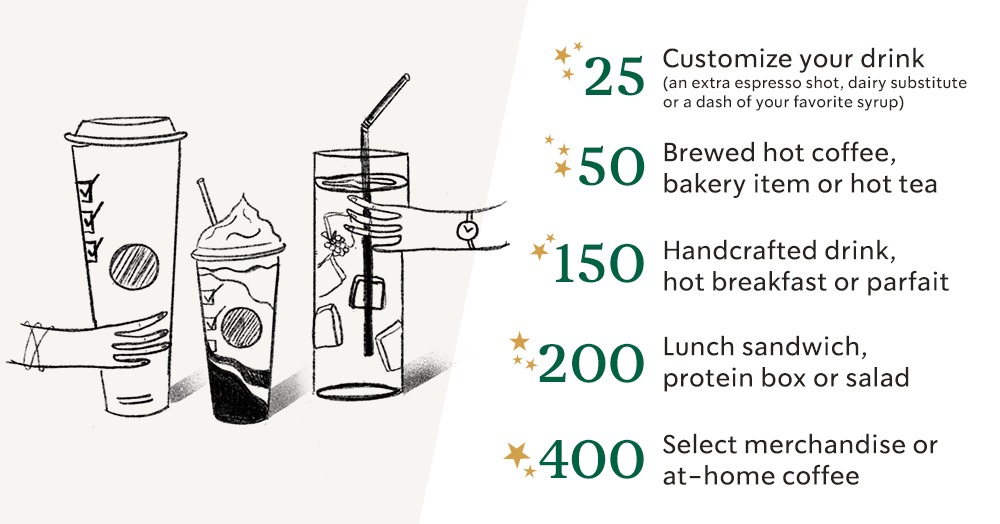
Source: Starbucks
User-generated content
You can make users the center of your ad campaigns. You can encourage people to create and share content relevant to the brand or product you’re promoting. Chip in some rewards to entice customers to spread the word about your brand, and you can get substantial traffic without paying too much.
Take, for example, Apple’s #ShotoniPhone campaign. This campaign encouraged people to take high-quality photos with their iPhones and share them on social media. The aim was to showcase the great standard of iPhone cameras and entice people to buy Apple’s flagship product. The campaign was very successful and drove huge sales for the iPhone.
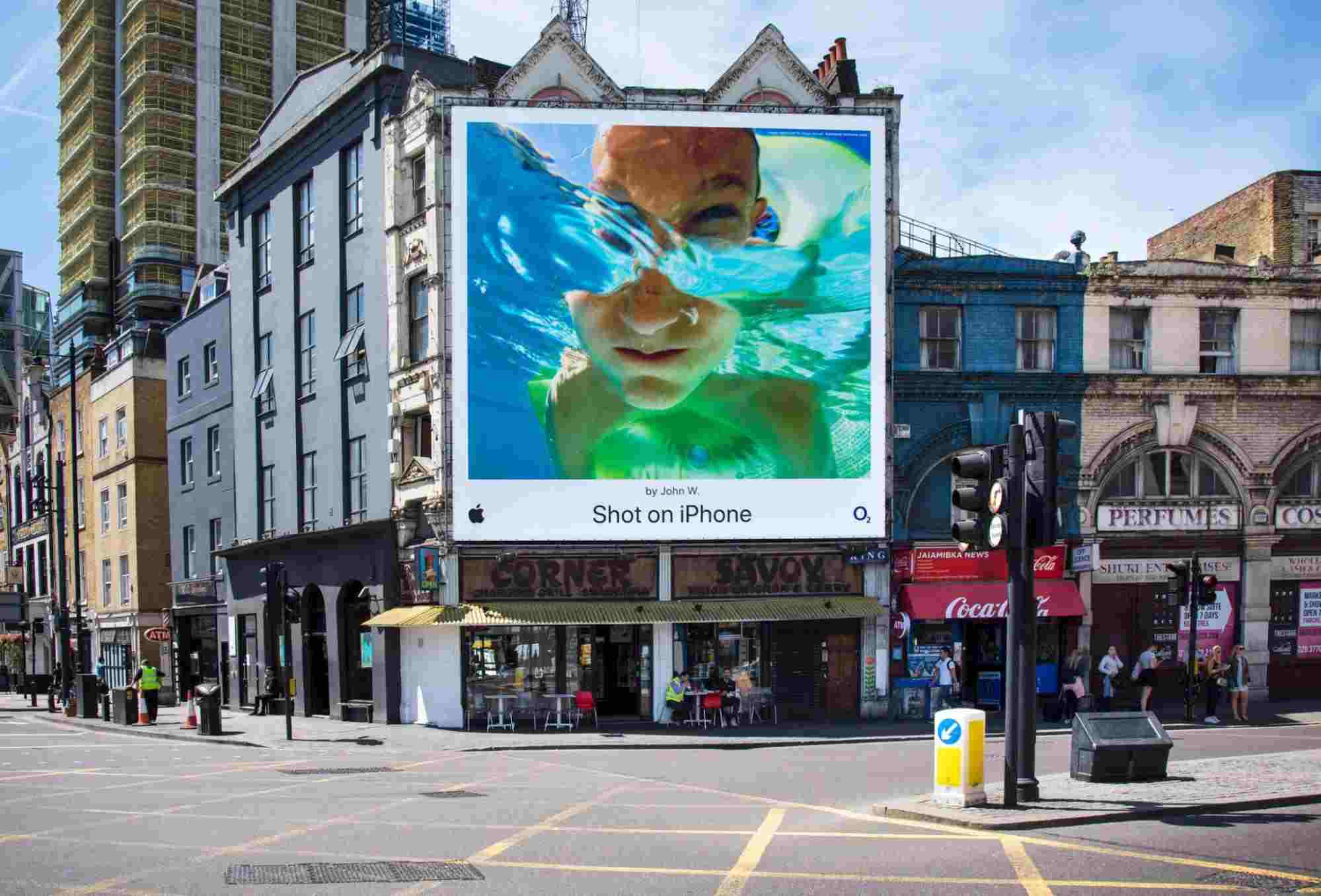
Guerilla marketing and viral advertising
Guerilla marketing involves using surprising/unexpected tactics to promote a product or service. It draws its name from “guerrilla” warfare, which is based on the element of surprise and ambush. The idea is to give customers something they don’t expect, leaving them in awe of your product.
For example, IWC, a Swiss watch manufacturer, placed stickers of their Big Pilot wrist watch on the arm straps of airport shuttles. Anyone holding the arm strap looked like they were wearing the Big Pilot watch. This creative ad elicited a lot of laughter and fanfare from airport goers, driving more sales for the brand.
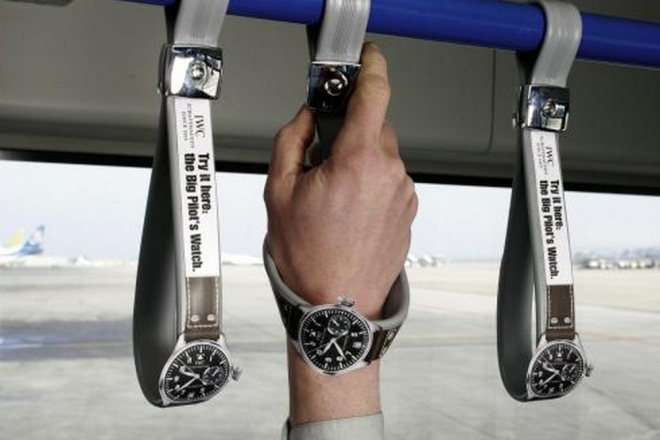
4 mistakes to avoid when running a CRO campaign
Avoid these common mistakes when optimizing your ad conversion rates:
1. Not understanding your target audience
Don’t deploy any campaign if you don’t fully understand your target audience. Otherwise, you’ll create landing pages that don’t convert, wasting your time and effort. Have a clear picture of who your target customer is or how to carry out a set of test campaigns to get this clear picture. What are their problems and needs? What will motivate them to take your suggested action? What value does your product or tool add to them?
Having deep insights about your target customers helps you create ads that speak well to them.
2. Ignoring analytics
Many people ignore analytics and go all in on instinct. However, it is wrong. You must analyze viewer response to your campaigns. What percentage are clicking on the call-the-action button? What is the bounce rate? How long does the average viewer spend on my landing page? These are important metrics to look at.
The idea is to immediately make changes if you’re not getting the desired conversions from your landing page.
3. Ignoring mobile optimization
It’s easy to forget about optimizing your landing pages for mobile displays because you create them on PCs. However, nearly 60% of online traffic comes from mobile phones, so it’ll be a great disservice to not optimize your landing pages for them. All your content should fit well on mobile displays, or the landing page will annoy users and dampen your conversion rates.
4. Not paying attention to website speed and performance
No matter how well-designed your landing page is, viewers will be annoyed if it doesn’t load quickly. Ensure your landing pages load as quickly as possible, even on slow connections. Compress images and avoid using hefty content that takes too much time to load. The faster, the better.
Ad campaign optimization checklist
Follow these conversion rate optimization tips when deploying ads on Adsterra or any other ad network:
1. Check pre-landers
If you used pre-landers for your campaign, ensure they’re catchy and have high-quality visuals. If you’re running a cost-per-action (CPA) campaign, you can contact Adsterra managers and get third-party opinions.
2. Creatives
Ensure all forms of multimedia in your ads are of high quality. Images and videos should be engaging and aesthetically pleasing. Ensure they fit well with other content on your landing page. Don’t forget to optimize them for mobile displays.
3. Frequency cappings
You can control the number of times a user can see your ads each day. It often takes two or more views to convert a user, so setting a cap of at least 2 viewings per 24 hours is advisable.
4. Budgeting strategy
Choose the way you want to pay for your campaign. You can choose cost-per-action (CPA) or cost-per-mille (CPM). The former implies paying for each action a viewer takes, and the latter means paying for every thousand ad views. CPA is the better model for affiliate marketing campaigns which involve easy doable conversions like app installs. CPM pricing is for long-run games where conversions take time to happen (deposits, delivery, etc.)
Adsterra provides a CPA Goal traffic optimization tool that helps you gain the maximum possible conversions from your ad budget. The tool uses algorithms to squeeze maximum conversions or hit your desirable eCPA.
5. Campaign limits
You can limit the amount you spend on your ads each hour or day. This feature ensures you don’t overrun your advertising budget. Just type in how much you want to spend each hour or day, and Adsterra ensures you never exceed it.

6. Deploy the campaign
With the above requirements met, it’s time to deploy your campaign. Before deployment, Adsterra’s Traffic Estimator will help you estimate the results your campaign will get according to its custom settings (price, type of creatives, budget limits, etc).
7. Analysis
The work doesn’t end after deploying your campaign. You must analyze it to ensure they give the intended results and make changes if that’s not the case. The good news is that you can seek help from Adsterra managers. Our managers can guide you on maximizing your ad budget and getting high conversions. Feel free to ask questions like
- How should I change the bid to get better results?
- How does my campaign compare to the competition?
- What’s the average bid for my target audience?
- Are my creatives good enough?
At Adsterra, we pride ourselves on providing top-notch customer service to advertisers. We’re always available to answer relevant questions and guide you on making the best of your advertising budget.
Conclusion
Conversion rate optimization (CRO) is a critical tool for every advertiser. It helps you increase your conversions and profit. You can maximize your ad budget and obtain much higher traffic than you would without CRO.
We have explained what you need to know about conversion rate optimization; its benefits, what it entails, and the common mistakes to avoid. Above all, ensure you choose a good ad network. No matter how well-optimized your ads are, you won’t get good results if you choose a network sending poor-quality traffic.
The good news is that Adsterra is a stellar, reliable ad network that gives you high-quality traffic. We help you target the right audience and get high conversion rates.
FAQs about conversion rate optimization
Your landing page is the prime target for implementing a conversion rate optimization strategy. This page advertises your product or service to potential customers, letting them know what value they can get from it. Your ads should link to a designated landing page instead of a home page or any other part of your website.
The average ad conversion rate across all industries is between 2% and 5%. Anything within this range is acceptable but not the best you can do. Conversion rate optimization strategies can help you boost your rates above 5% or even 10%. Above 10% is the rate that you should target; it’s difficult but not impossible.
You improve your conversion rates by paying attention to vital factors, including user experience, visuals, site speed, call-to-actions, etc. Your landing page should load quickly and be easy to navigate. Use high-quality images and videos to demonstrate the product you’re advertising. Insert call-to-action buttons with brief, concise texts, e.g., “Download,” “Buy now,” etc.
Your ad network should provide you with detailed analytics about the performance of your ads. This way, you can easily evaluate how your conversion rate optimization plan has affected your return on investment. A good plan should boost your conversion rates significantly.
Use text that indicates a sense of urgency. This kind of text encourages viewers to take action immediately and not default to procrastination. Also, your call-to-action text should be short and precise, e.g., “Shop now,” “Get this tool,” “Sign up,” etc. Always include a call-to-action button because the human brain gets naturally nagged to take action after seeing a clickable button.
